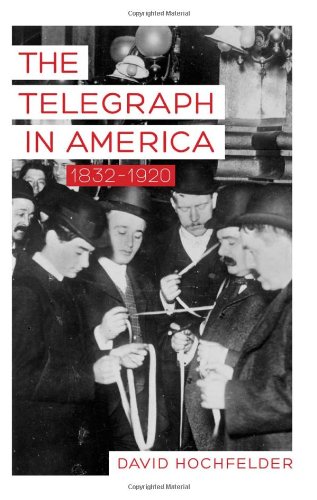

Most ebook files are in PDF format, so you can easily read them using various software such as Foxit Reader or directly on the Google Chrome browser.
Some ebook files are released by publishers in other formats such as .awz, .mobi, .epub, .fb2, etc. You may need to install specific software to read these formats on mobile/PC, such as Calibre.
Please read the tutorial at this link: https://ebookbell.com/faq
We offer FREE conversion to the popular formats you request; however, this may take some time. Therefore, right after payment, please email us, and we will try to provide the service as quickly as possible.
For some exceptional file formats or broken links (if any), please refrain from opening any disputes. Instead, email us first, and we will try to assist within a maximum of 6 hours.
EbookBell Team

4.3
48 reviewsTelegraphy in the nineteenth century approximated the internet in our own day. Historian and electrical engineer David Hochfelder offers readers a comprehensive history of this groundbreaking technology, which employs breaks in an electrical current to send code along miles of wire. The Telegraph in America, 1832–1920, examines the correlation between technological innovation and social change and shows how this transformative relationship helps us to understand and perhaps define modernity.
The telegraph revolutionized the spread of information―speeding personal messages, news of public events, and details of stock fluctuations. During the Civil War, telegraphed intelligence and high-level directives gave the Union war effort a critical advantage. Afterward, the telegraph helped build and break fortunes and, along with the railroad, altered the way Americans thought about time and space. Hochfelder thus supplies us with an introduction to the early stirrings of the information age.